What size snowboard should I get?
When it comes to snowboarding, the size can make all the difference! Yep, choosing the right size plank is key for your riding level and preferred terrain, so, find your perfect match today with our ultimate guide.

Whether you’re just starting out or updating your quiver, one question always goes through your mind when purchasing a new board: what size should I get? Yep, even the pros ask themselves whether they should downsize their board by a centimeter or two or size up for pow.
While, traditionally, snowboarding is all about bending the rules, finding the proper snowboard setup is one thing that needs to be done right. And no, it’s not as simple as working out the length from the ground to your chin (no matter what that guy in the rental shop at the hill said)! That’s why we’ve put together the ultimate guide so you can find the right gear for you.
When aiming for the perfect-sized tool, there are a few factors to think about: these include your weight, height, and riding style. Don’t worry if you’re feeling unsure, though! We’ve broken each element down for you below so you can get selecting – and start shredding. And, once you’ve found the perfect board, complete your look with a good-times-guaranteed snowboard jacket and pair of snowboard pants.
Quick find navigation
Consider your weight
No one likes to think about the weighing scales. But how much you weigh plays a super important part in choosing the right snowboard length. That’s because snowboards are designed with a specific flex in mind – influenced by the rider’s weight. The flex will misbehave if you’re too light or heavy compared to the board’s desired weight range.
If you’re lighter, you’ll be after something shorter. Go for a snowboard that’s too long, and you’ll have a tough time moving and flexing it. If you’re heavier, though, you’ll want a longer, wider board for stability. Anything too short, and the flex will be more than it should be. This means you might experience extra chatter at high speeds or some dreaded noodling in your carves. Picked something too short and too soft? Say goodbye to holding an edge, buddy!
However, sometimes it’s better to size down your board even if you’re heavier. This is usually because you’re after added mobility and a lighter setup like you might if you ride predominantly in the park.
Everyone has a range of snowboard lengths to choose from based on weight. For example, someone weighing 154 lbs will have a range of 154 - 163 cm – and any snowboard within range is likely to be a good fit for them and behave how it’s intended to. From there, we can factor in other elements to get a more bang-on length for you.
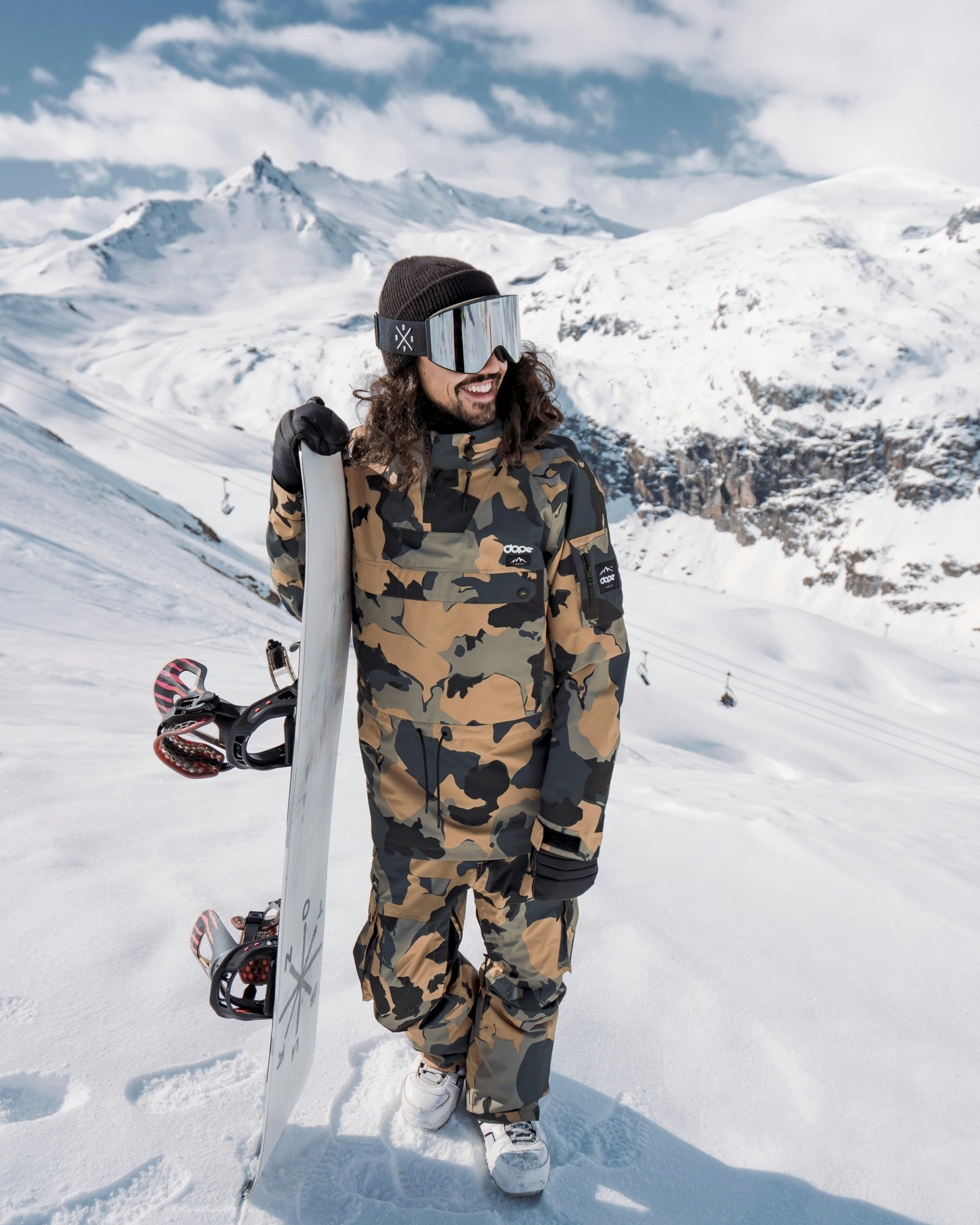
Know your height
Height is also a deciding factor in choosing the right board size. For example, a taller rider will usually need a longer board to accommodate a wider stance. If you end up with something too short, you won’t be able to set your stance width as wide as normal, or you might not be in the best position on the board.
On the shorter side? Select a shorter board to match! Anything too long, and you might not go as narrow as you’re used to or feel you have too much board to work with outside your inserts. However, don’t rely on only your height to determine your board’s length – consider your weight, ability level, and riding style, too.
Some old-school riders swear by stacking a snowboard against you to decide if it’s too short, long, or just right – Goldilocks-style. If a board reaches between your collarbone and chin when stood on end, it’s a shorter board, so perfect for beginners and freestylers. Does the board reach your mouth or higher? It’s a longer length – perfect for powder and high speeds (our favorite combo!).
However, remember that trying to measure a board against your body is not a 100%-certain method to find the perfect size. For something more substantial, check out our snowboard size guides below.
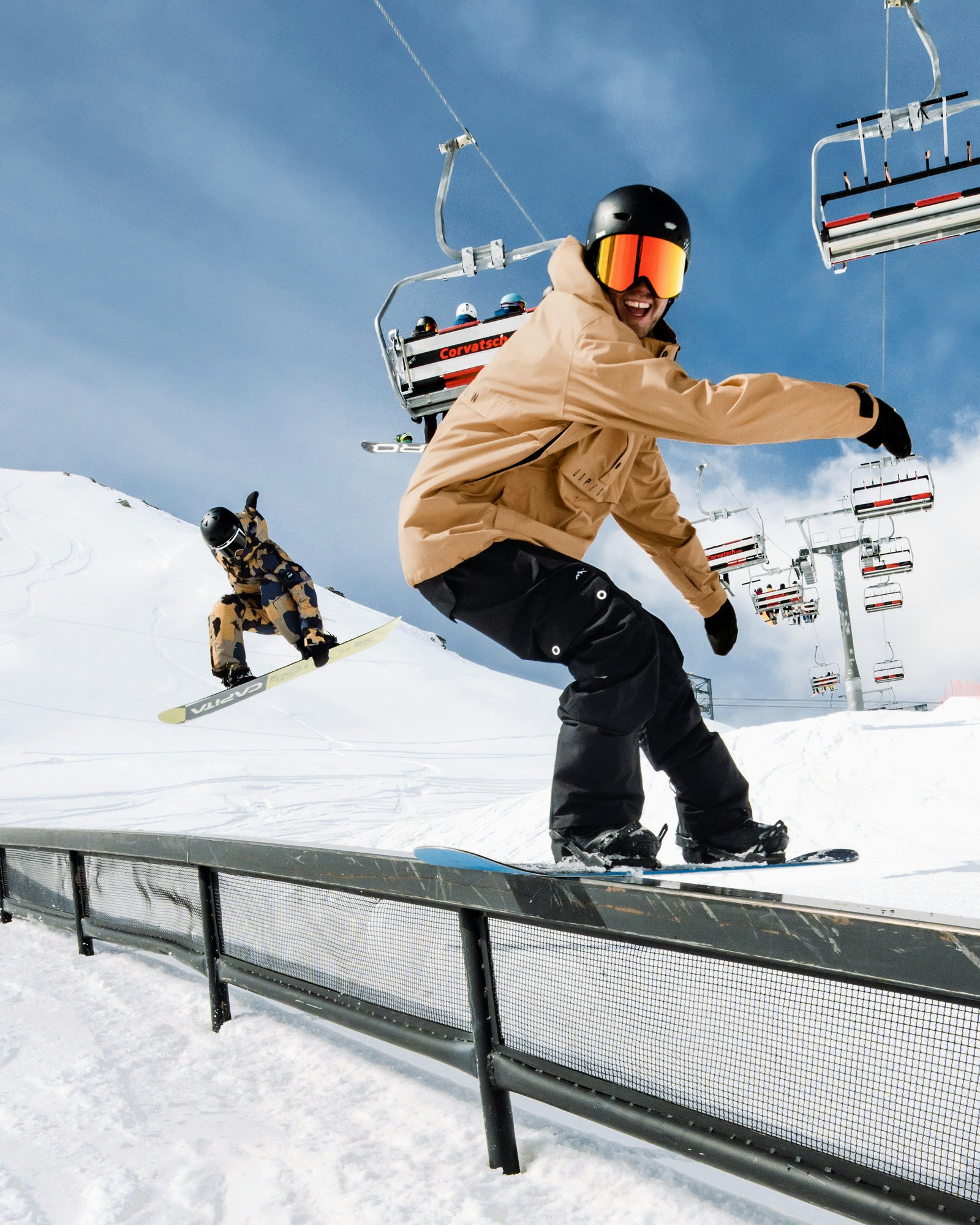
Don’t forget about width
The width of your board is also worth considering! It’s super handy in achieving max edge control and dodging toe and heel drag. To find the width, measure the board at its narrowest point (normally at the center), which is known as the waist width. This should directly correspond with your boot size.
What we mean by corresponding with your boot size is finding a pair of boots that hang over the edges of your board at the insert packs (equal to or less than 0.7 inches front and back, preferably). This way, you can leverage the board and apply pressure on the edges with your ankles. Overhang too much or not enough, and you might find yourself in a tricky spot.
So why is this so important to think about when choosing your snowboard size? Well, suppose your board is the perfect length but too narrow for your boot size. Here, you’ll experience loss of edge control and plenty of toe and heel drag – a drag in itself as it’ll slow you down and might cause a crash. No one wants a toe or heel snag on a kicker when setting up to send it!
However, going extra wide to avoid this problem isn’t the best answer as you’ll find you may struggle to get on edge. Matching boots, binding size, and board width is a fine balance. But with overlap between binding sizes, regular, wide, and extra wide snowboard widths, and different footprint-size boots available, there’s always a perfect combo to be had.
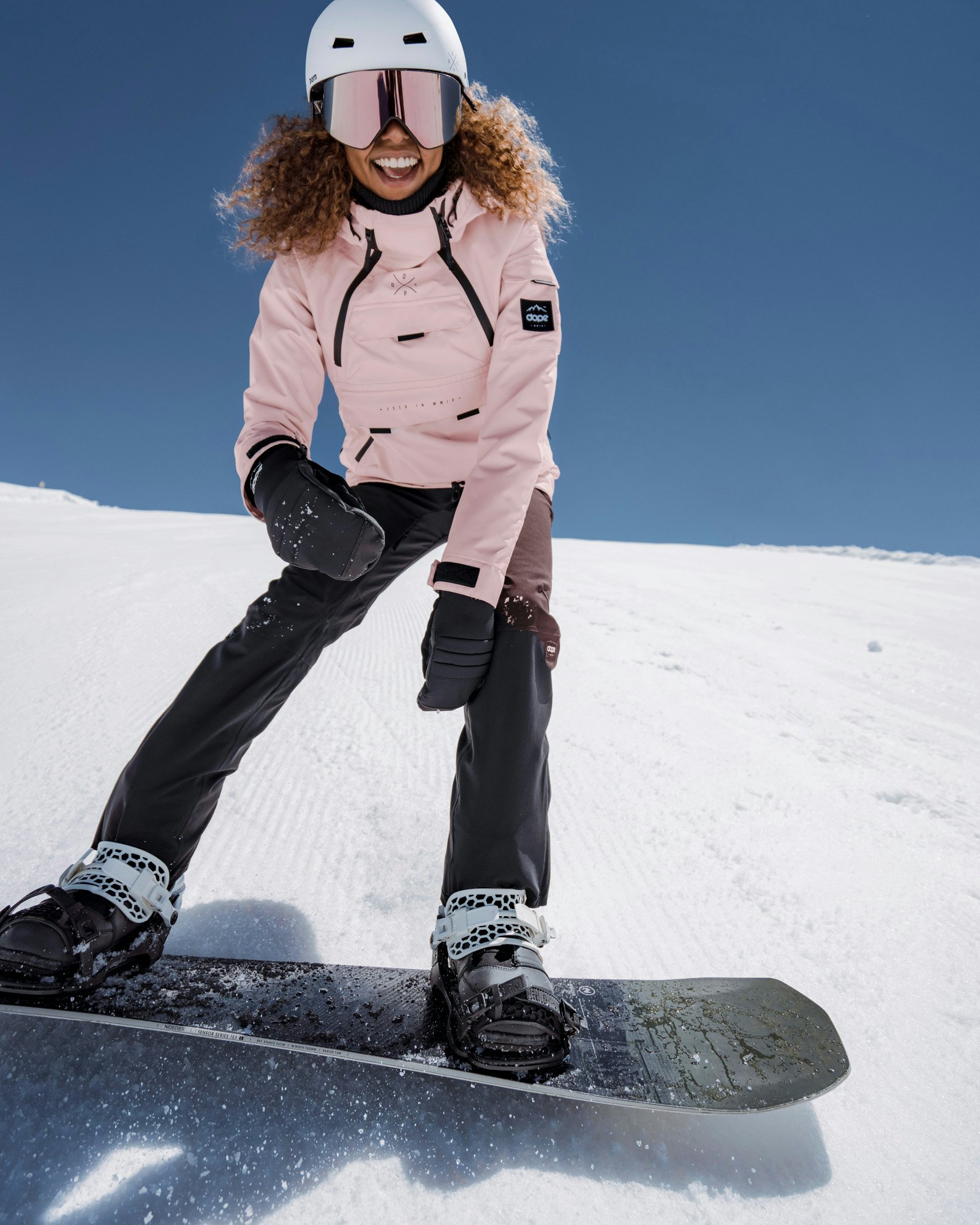
Think about your ability level
It’s always worth considering your ability level when deciding the size. Length, shape, materials, and intended use are all thought about when a snowboard is made – and so is your experience level.
For example, feeling pretty pro? You’ll be disappointed at a beginner board’s limitations. Only just practicing falling leaf? A board made for a more experienced rider might overwhelm you.
Beginner
If you’re a riding newbie, choose a board that’s at the lower end of the manufacturers recommended range (such as 154 cm for our 154 lbs friend we mentioned earlier). The shorter length makes your snowboard easier to control and you’ll smoothly link those turns as though you’ve been doing it for years.
Remember the flex, too. And nope, we’re not talking about flexing about your new car. Flex on a snowboard is all about softness or stiffness. A forgiving flex on a shorter board is ideal for mastering the basics and getting to grips with edge control. A softer board will be more forgiving when learning to link turns as it will have more torsional flex and a bigger margin for error before you hook that back edge.
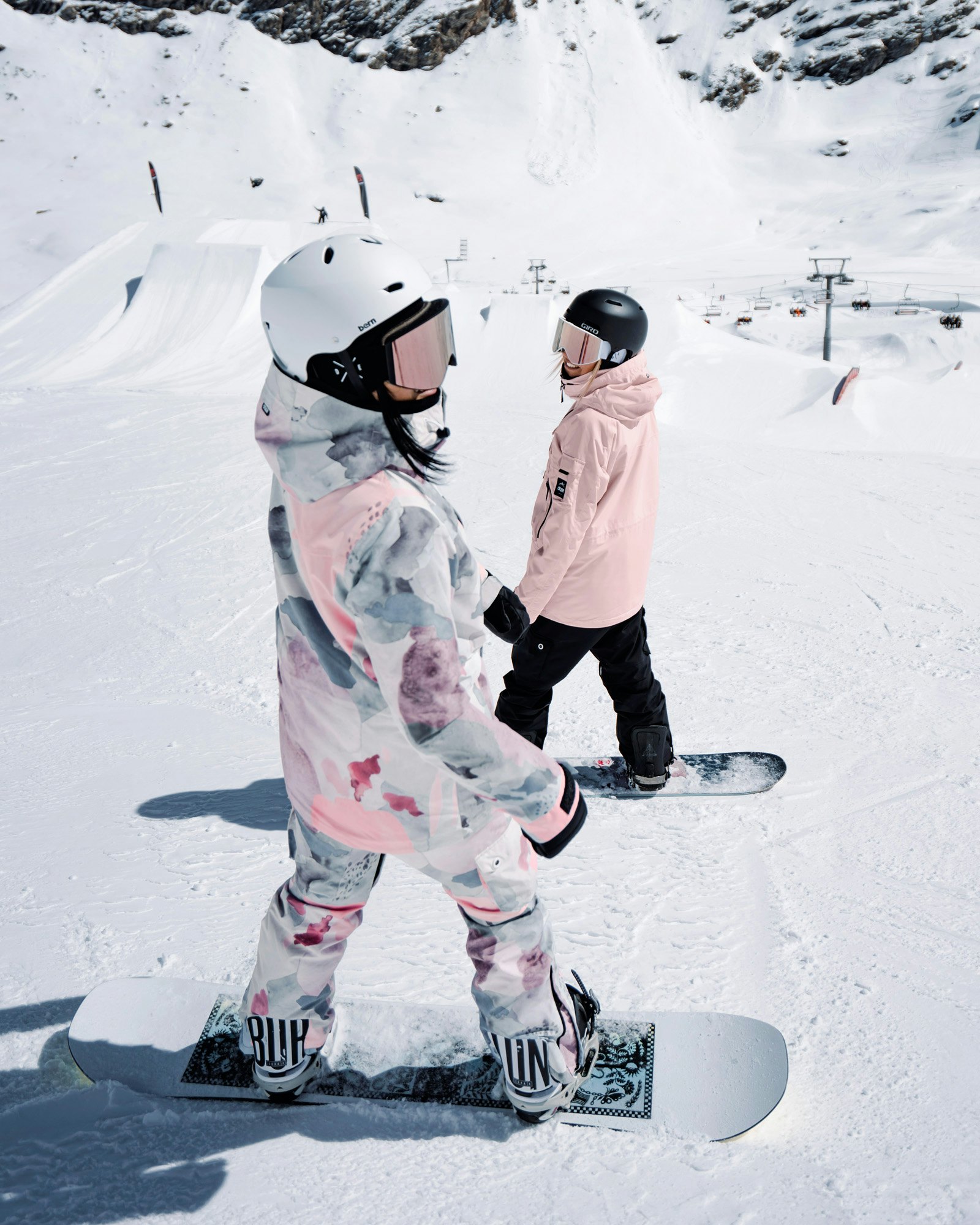
Intermediate
If you’re ramping up the levels to intermediate, choose a board in the middle of the recommended size-to-weight range, but take into account your height compared to the average, as well as where you ride most often. Shorter boards will be more agile, easier to move, and more fun to experiment with in the park but will have less float in powder. Longer boards work inversely. But the shape and camber profile of the board will definitely be more important than length alone, so don’t stress too much about it.
If you’re into doing everything on the mountain, an All Mountain-style board in the middle of your snowboard size range is your best option. If you’ve got a couple of seasons under your belt, though — and see yourself as a bit of a powder hound – go for a longer-size snowboard with a directional shape. This is a solid choice for epic times in the deep and sending it off backcountry booters. Plus, the added length will give you more stability and confidence to take on steeper lines and more advanced maneuvers.
Advanced
The advanced riders among you will already have a good idea of your ideal gear list. But now it’s time to fine-tune your setup and skills to have the most fun imaginable. This means looking at shape, camber profile, sidecut radius, etc. As they say, the devil’s in the details.
If we’re talking exclusively about size, you’ll want to choose a board in the middle of that recommended range. But, of course, it totally depends on your riding style (covered below). Shorter boards amplify the fun levels with effortless maneuvering for tight trees and in the park. Much like for the intermediates, it’s always worth going a bit longer for pow times. With the right snowboard size and next-level skills, the entire mountain becomes your playground.
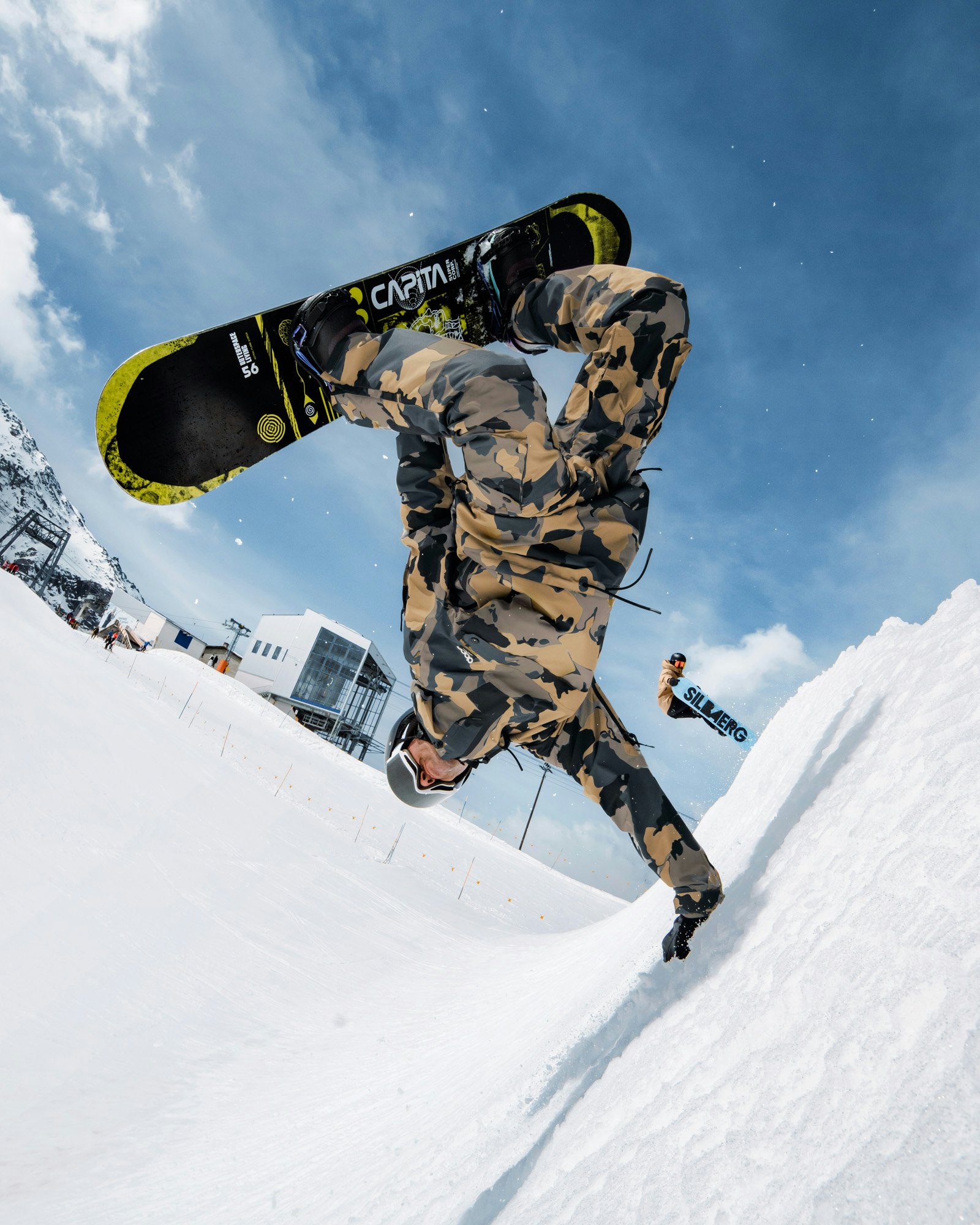
Choose your riding style
The type of riding you’re into will also play a crucial role in determining the best snowboard size. Are you a park rat, powder hound, or piste cruiser? How about a mix of everything? Whatever your style, there’s a terrain-specific board to match – and these often come in different sizes.
We’ve covered the basics below, but these are just your launching pad. There are also disciplines like splitboarding and combination boards, such as an All Mountain Freestyle model (versatile with a park board’s playfulness). Find the style and board type that’s most your vibe, and you’ll be that bit closer to finding your perfect board size.
All Mountain
All Mountain has to be the most common riding style. That’s because more riders champion versatility over being creatures of habit. After all, there’s a whole mountain out there, so why not explore it? Spend the mornings carving up corduroy groomers before lapping the park and then winding through the trees in the afternoon.
If that sounds like your jam or you’re just starting your snowboarding journey, you’ll want an All Mountain board. These allow you to ride anything you want. And in terms of size? They usually directly correspond with your weight and height, so choose a board in the middle of your range. This will give you an easy board to move while still holding an edge when blasting down the hill.
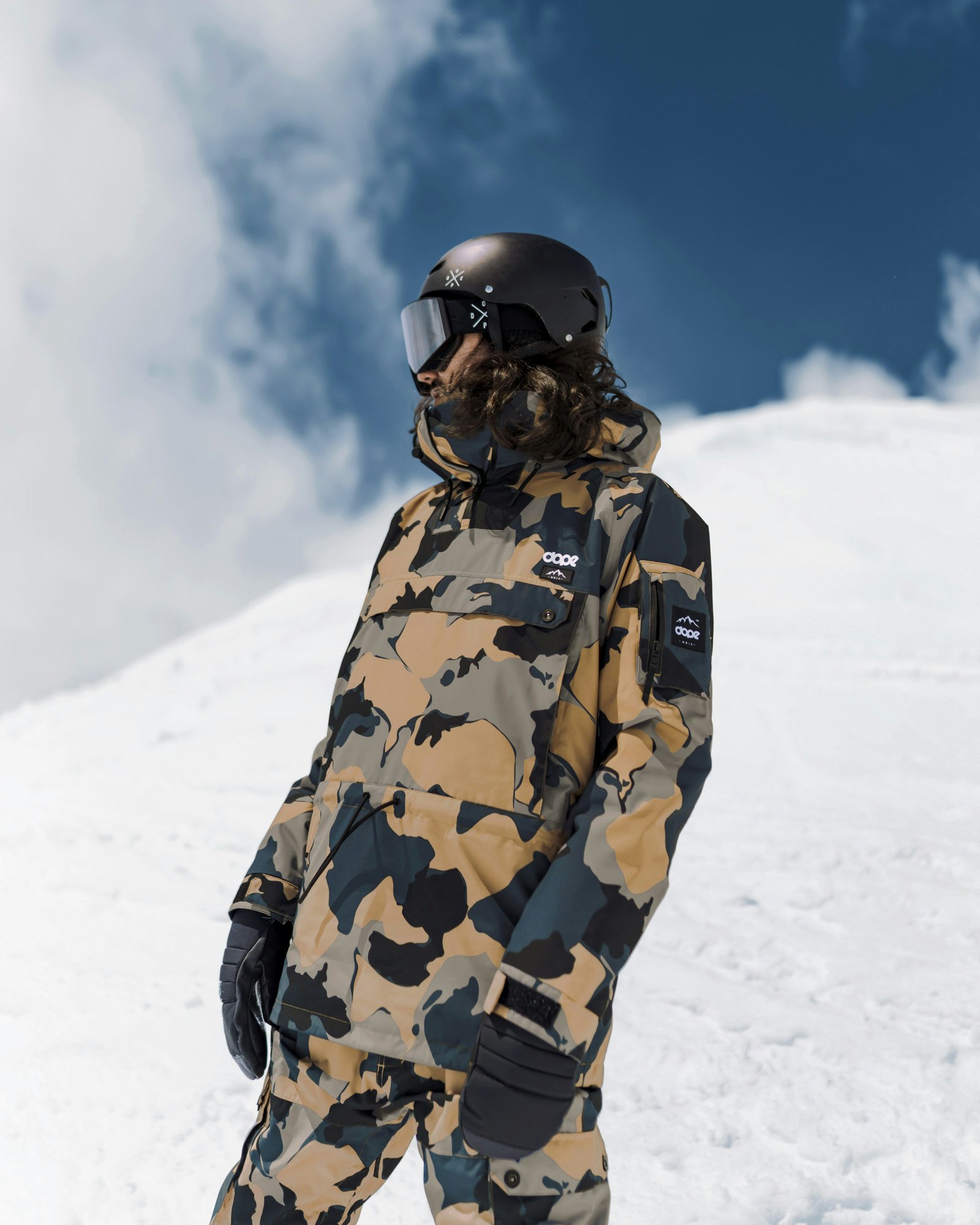
Freestyle
If you’re into jibbing the side of the slopes, creating features, or hitting rails and boxes in the park, you’ll want a shorter snowboard at the low end of your recommended range. That’s because it's easier to turn, rotate and throw down tricks with something shorter, lighter, and easier to move. Think of something more skateboard-inspired with flex rather than going for anything too long in length.
However, if you’re into hitting big kickers or riding pipe, go a little longer in board length for that extra stability and length between the contact points. Freestyle boards tend to have a true twin shape with hardcore edges to take on slams, nicks, and heavy hits. They’ll also have a range of camber styles, such as flat, traditional, rocker, or combo.
Freeride
Live for freshies and backcountry days? Then, claim a freeride board slightly longer than normal – or at the furthest end of your scale – for ultimate float in the white stuff and adventures off-piste. That added length (around 0.7-1.5 inches longer) will be just what you need to keep that nose above the pow and provide stiffness for more stability (and shouts of ‘yew!’ over those pillows).
As well as having a few centimeters added, freeride boards are also often directional or directional twin shapes. They’ll have a stiffer flex for extra stability and response when straight-lining down the fall line and slashing stashes. Of course, you can look for powder-specific boards too. These often have a generously rockered nose for effortless pivoting and light-as-a-feather flotation.
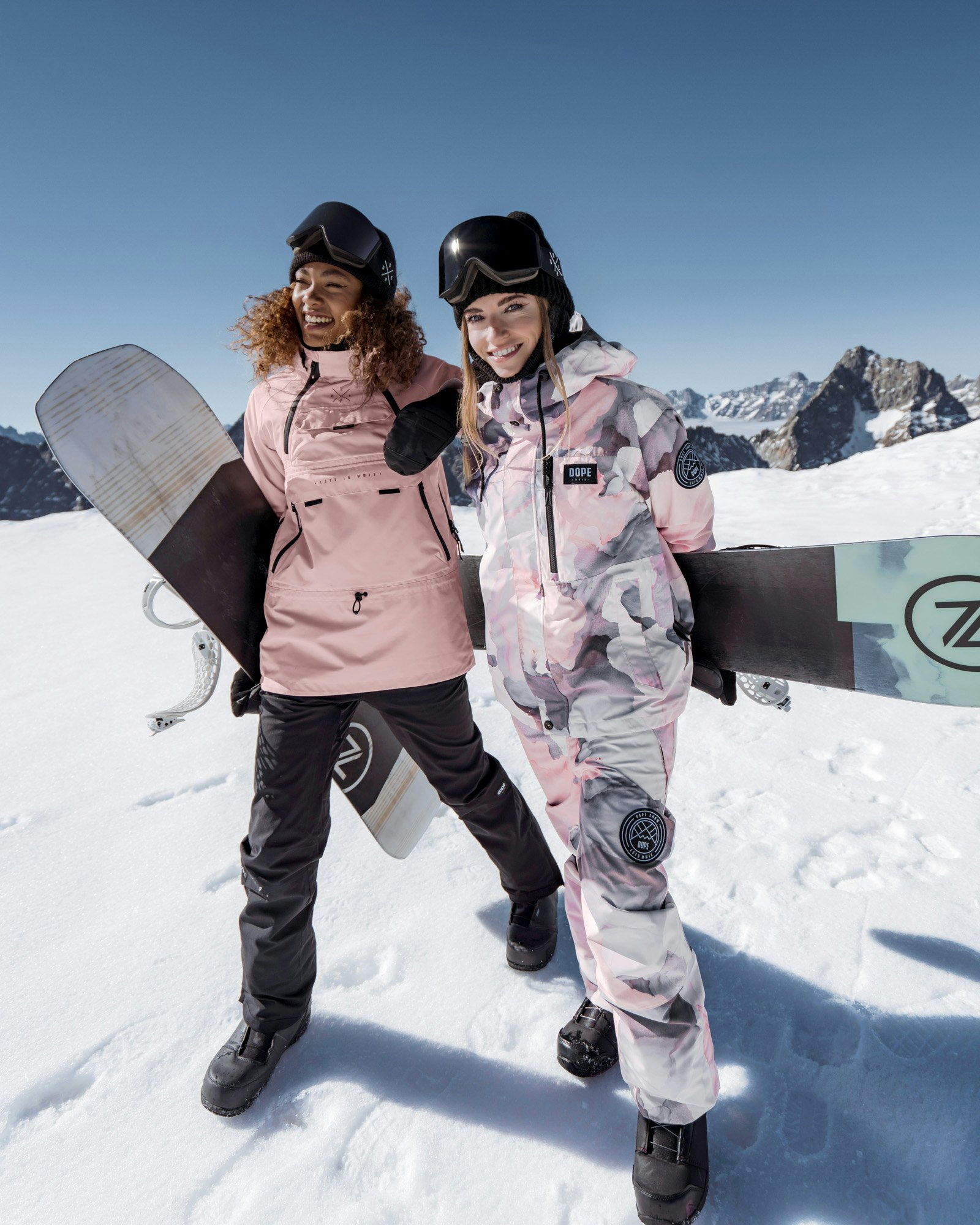
Snowboard size charts
We’ve pulled together snowboard size charts for you to decide which length and width best suit you. First, find your weight or height and see which snowboard size we suggest. Once you have that, you’ve found what’s known as the ‘standard length’ range. These standard lengths often correspond with All Mountain boards. From there, you can adjust the length depending on your ability and terrain preference. This might end up being the same or different from your standard length. Whatever you land on, that’s your ideal-sized snowboard.
For example, I’m approximately 5’3” and around 115 lbs, so my standard length, according to the size charts, is between 144-152 cm. However, say I have a penchant for park. Then, I’ll trim 1-2.5 inches or stay on the lower end of the scale because I’m an intermediate freestyle rider. This leaves me with an ideal snowboard size and length of 140 - 144 cm. Boom.
However, don’t forget most manufacturers will also provide length-to-weight and height recommendations for each deck. So, look at those before making your final decision, as each model is different. Plus, most brands create women and kid-specific boards. And that’s because women’s and kids’ bodies and turn mechanics differ, so the boards will often have narrower widths, with softer flexes and thinner profiles. Compare these specific factors before setting your sights on your setup.
You can also try varying sizes and lengths to get a feel for your fave size and decide what suits you best. Our top tip? Head to a snowboard shop in resort! These will often let you test and ride different boards over different days (and conditions) to find your best match.
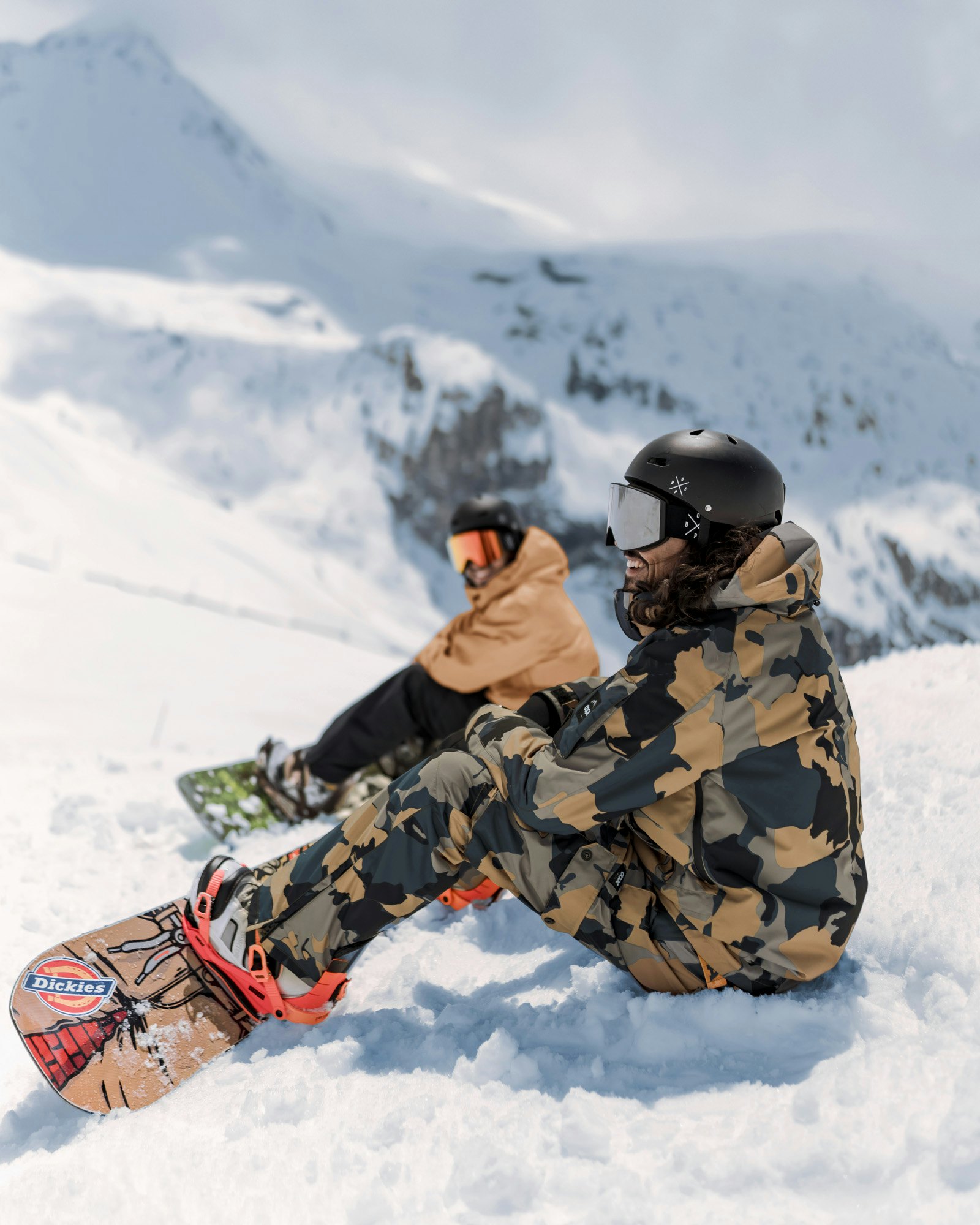
Snowboard length by weight
| Rider weight (lb) | Snowboard size range (cm) |
| < 80 lb | 90 – 135 cm |
| 80 - 110 lb | 135 – 146 cm |
| 110 - 119 lb | 142 – 148 cm |
| 119 - 130 lb | 144 – 149 cm |
| 130 - 139 lb | 146 – 152 cm |
| 139 - 150 lb | 148 – 154 cm |
| 150 - 161 lb | 151 – 156 cm |
| 161 - 170 lb | 152 – 158 cm |
| 170 - 180 lb | 153 – 159 cm |
| 180 - 190 lb | 155 – 161 cm |
| > 190 lb | > 157 cm |
Snowboard length by height
| Rider height (Inches) | Snowboard size range (cm) |
| 4'8" | 128 – 136 cm |
| 5' | 133 – 141 cm |
| 5'2" | 139 – 147 cm |
| 5'4" | 144 – 152 cm |
| 5'6" | 149 – 157 cm |
| 5'8" | 154 – 162 cm |
| 5'10" | 159 – 167 cm |
| > 6' | > 160 cm |
Snowboard width and boot size chart
| US Men’s boot size | Snowboard waist width (mm) |
| 6.0 - 8.0 | 235 – 245 mm |
| 8.0 - 9.5 | 245 – 255 mm |
| 10.0 - 11.5 | 255 – 260 mm |
| > 11.5 | > 260 – 265 mm |
| US Women’s boot size | Snowboard waist width (mm) |
| < 6 | < 235 mm |
| 6.0 - 8.5 | 235 – 245 mm |
| > 8.5 | > 245 mm |
Take shape into account
You might have found the perfect size, but sometimes something feels slightly off. That’s because it’s essential to think about the board’s shape, profile, and flex. Yep, it dramatically determines how a board feels beneath your feet – and can either make or break a day on the mountain.
For All Mountain and Freeriding, it’s got to be a directional or directional twin shape. This directional shape means the board has a non-symmetrical design (i.e., there’s a specific nose and tail). Because it’s unsymmetrical, the board might differ in shape, stiffness, and contact point at each end, often with a stiffer tail for extra stability. In short, a directional shape is perfect for riding in one direction – such as floating fast down powder fields.
For the twins, you have your true twin and your directional twin. True twin can also be called twin tip, which basically means that both tip and tail are identical in shape and flex. This symmetrical shape makes these boards perfect for riding switch and nailing landings in the park, pipe, and street. Directional twin, on the other hand, is when the nose and tail are slightly different. For example, the nose is often slightly longer and wider than the tail. This bit of length normally gives you a boost when riding pow or clocking speed.
Don’t forget about your profile shapes, too. These include camber, rocker, flat, hybrid, and combination. To give you a super quick summary, a rocker in a board’s nose and tail will give you that smooth, buttery feeling, while a full camber board is all about having a reliable, grippy edge. Flex is also important in the whole board setup. Choose from stiff, medium, and soft flex boards for your best time on the mountain.
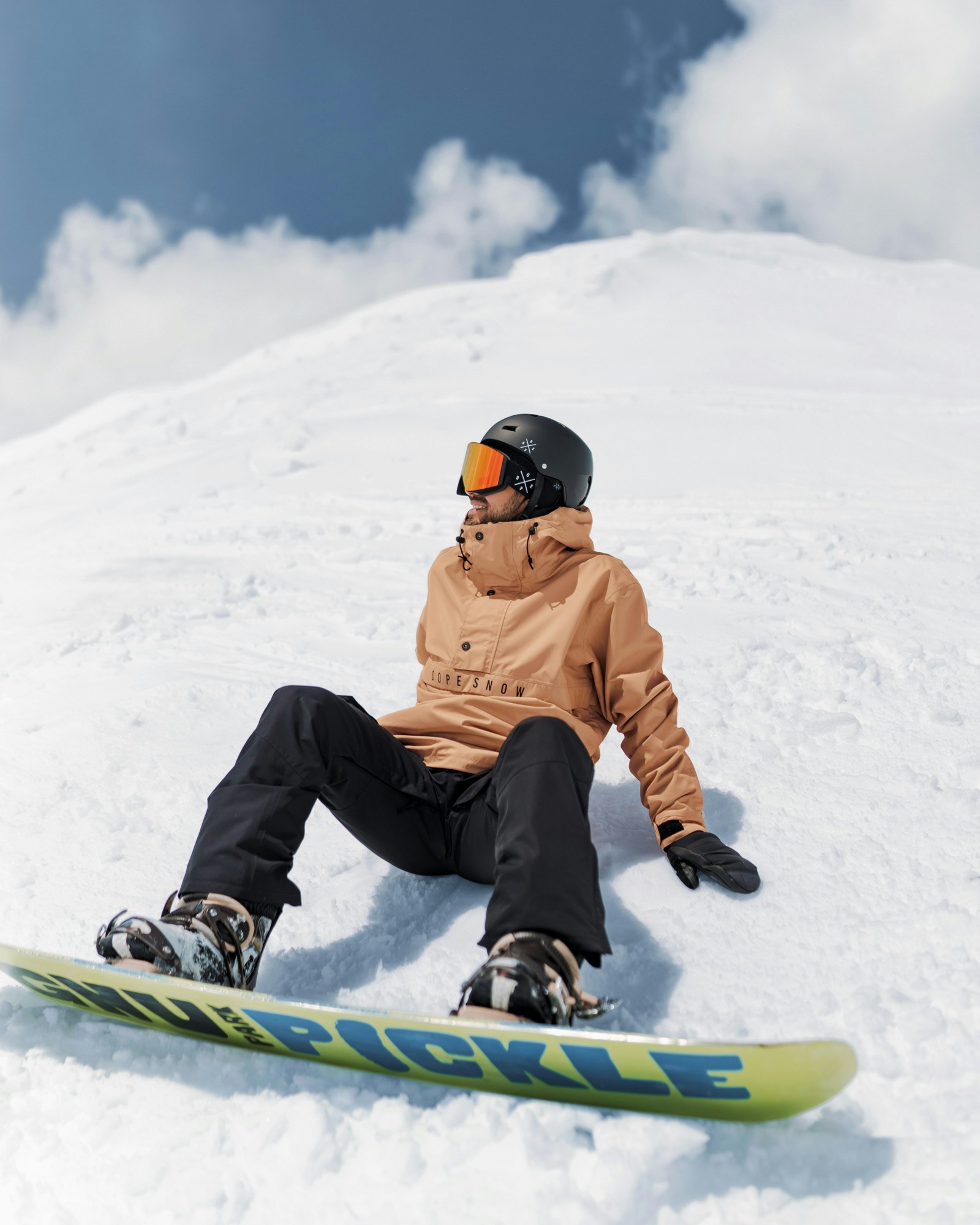
Wrapping up
So, now you have everything you need to choose the perfect-sized snowboard! To sum up, everyone has a snowboard size and length range based on weight and height. From there, you select your board in the middle, higher or lower end of the scale based on your ability and terrain preference.
The most important thing, though, is to find a board you feel confident and comfortable with. Personal preference is a hugely important factor – if not the most important – when choosing the best size and developing your shred style.
Once you have a snowboard to match those criteria, you’ll be ready to cruise and charge the mountain. But, of course, why limit yourself to just one board? Instead, expand your quiver (and where you can go on the hill) with different-sized boards for different days, such as one for bluebirds and another for park comps. Trust us – there’s no such thing as owning too many snowboards.
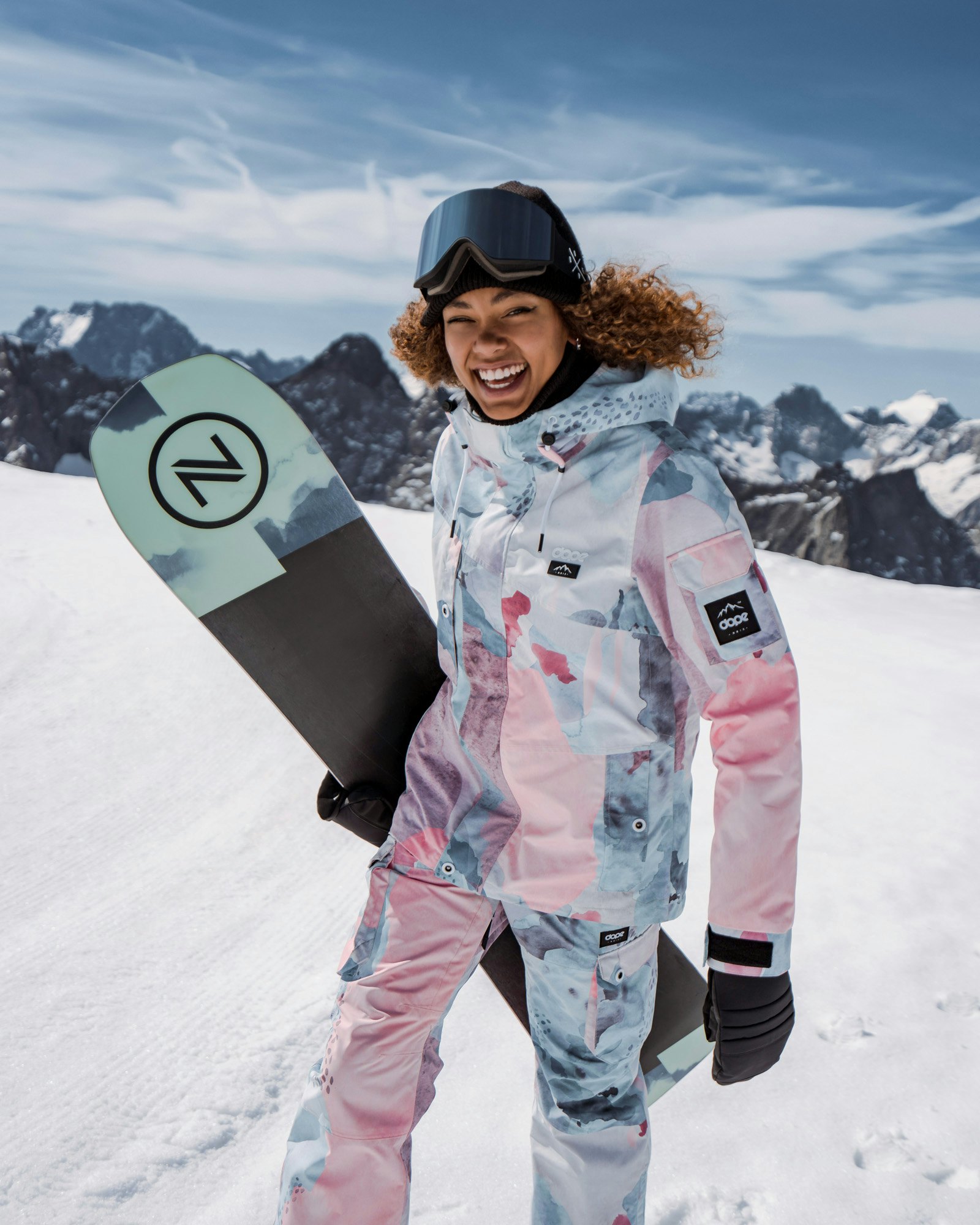
Related reading:
